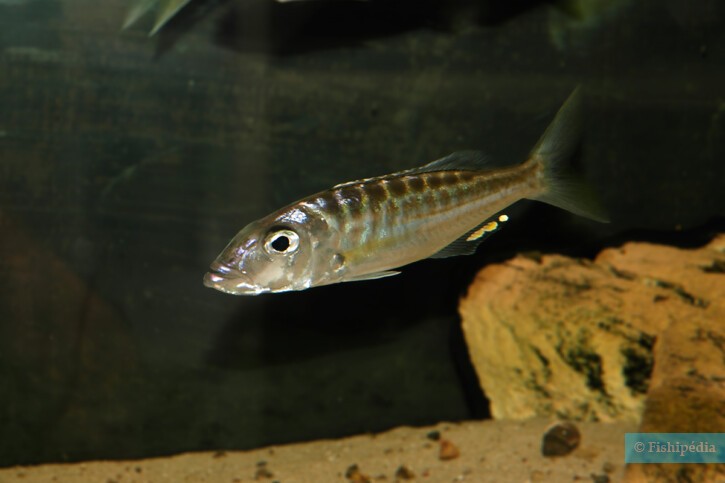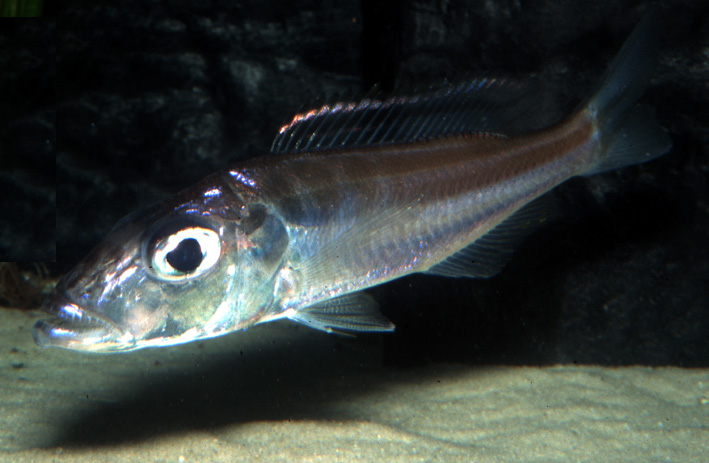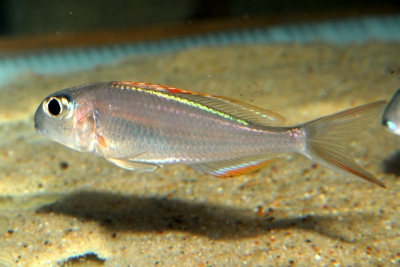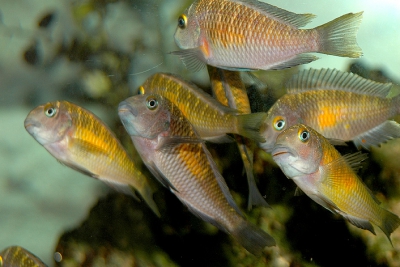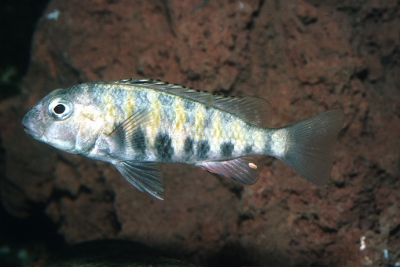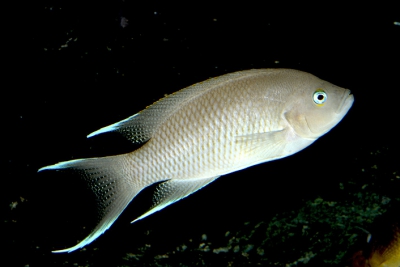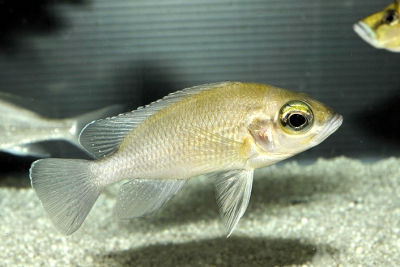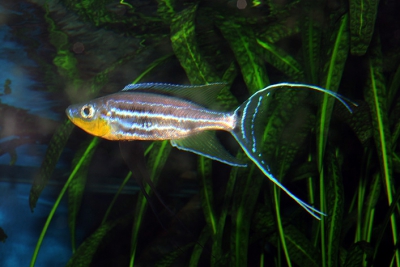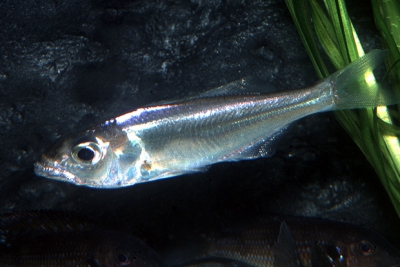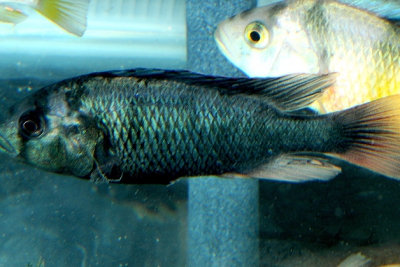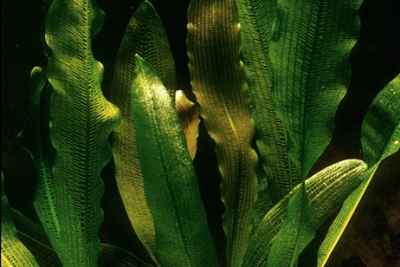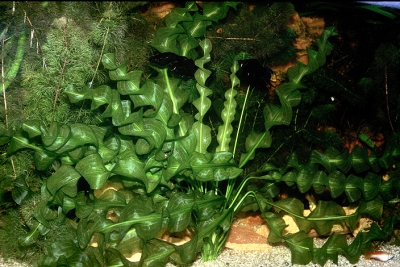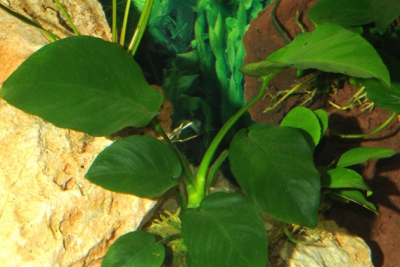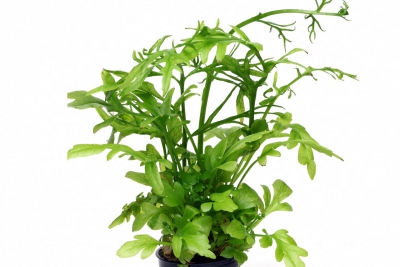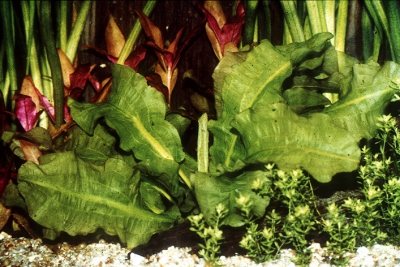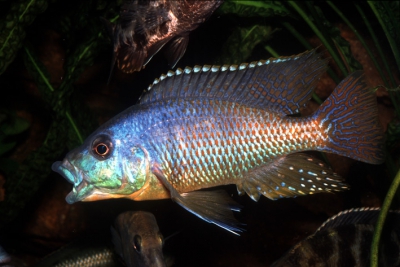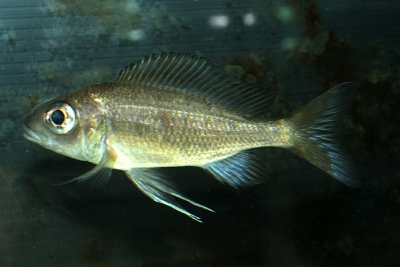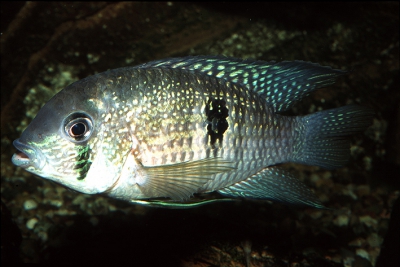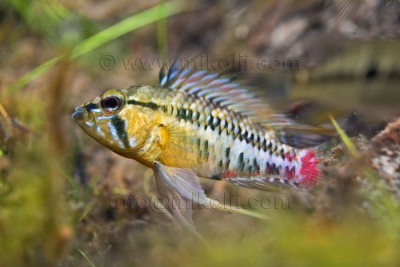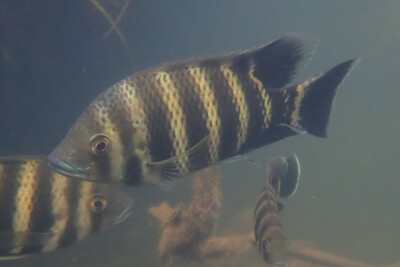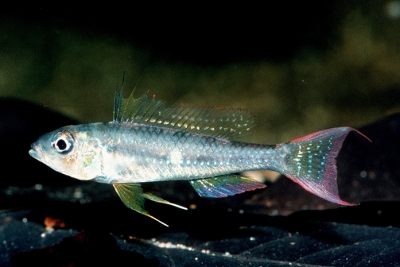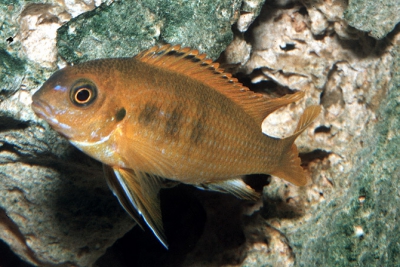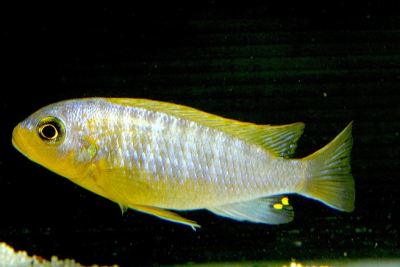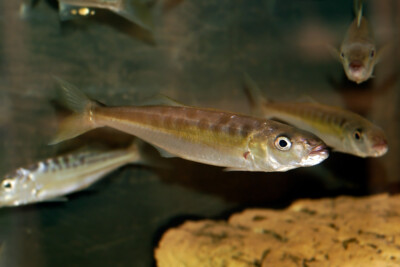Bathybates ferox
| Scientific name | Bathybates ferox |
|---|---|
| Descriptor | Boulenger |
| Year of description | 1898 |
| IUCN category (World) | LC |
| Family | Cichlidae |
| Genus | Bathybates |
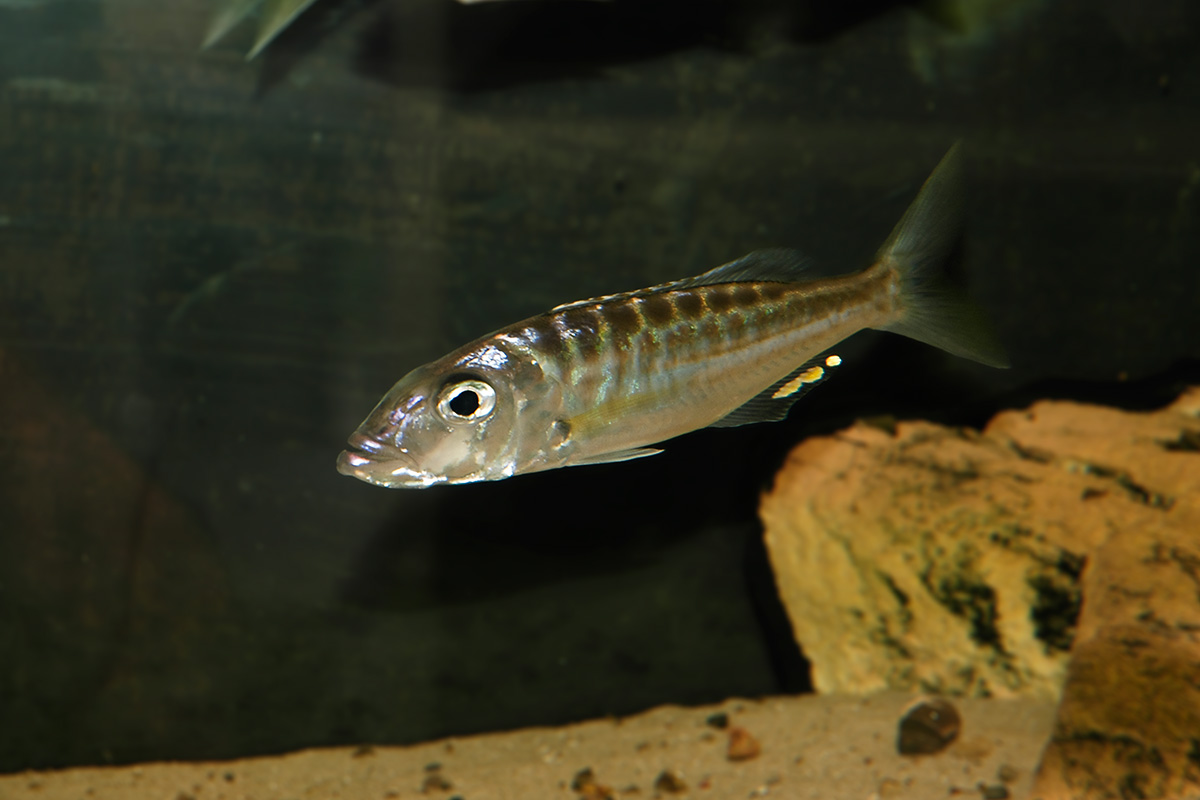

Introduction
Bathybates ferox is a fresh water fish from the Africa.
This sheet is currently being prepared. The texts currently proposed come from our data model or are being drafted. To request priority for this content, you can write to us HERE.
Who is it?
Morphology
-
Average size35 cm
-
Maximum size40 cm
-
Longevity10 year
-
ShapeSerpentiform
-
Average size35 cm
-
Maximum size40 cm
-
Longevity10 year
-
ShapeSerpentiform
How to recognize This fish ?
Bathybates ferox measures between 35 and 40 cm.
Behaviour & Life cycle
-
dietcarnivorous
-
Sociabilityliving in a group or alone
-
territorialNo
-
Way of livingnocturnal
Bathybates ferox hunts in the stalk and is one of the predators of its biotope. Opportunistic, it does not hesitate to attack any smaller animal nearby.
Bathybates ferox is a fish living in a group or alone naturally found at mid-depth. This species is carnivorous . This fish lives mainly at night. Usually, it leaves its hiding place and starts to be active once it gets dark.
n general, outside of the hunting season, this species does not care much about other animals crossing its path.
Reproduction
-
Reproductionovipare incubateur buccal
Bathybates ferox is a fish ovipare incubateur buccal.
Harmless species
This species does not represent any particular threats to humans when encountered in its natural environment.
Origin and distribution
Conservation status of populations (IUCN)
What is its habitat?
Natural environment characteristics
-
Temperature23 - 27 °C
-
pH (acidity)7.8 - 8.8
-
gh (hardness)15 - 25
-
FlowSlow and Stagnant
Biotope presentation
Bathybates ferox is most often found at a depth between 0m and 70m. However, it is not impossible to find this species at other depths.
Species of the same biotope
Main recommendations for fishkeeping
Deontology
In order to preserve wildlife, if you acquire this animal, it must not be released into the wild. See also, the Fishipedia charter.
Fishipedia supports the practice of responsible and environmentally friendly aquarium keeping. We encourage maintenance if it is motivated by a desire to understand the biological functioning of living things and if it is done with respect for animal life.
We believe that aquaristics is an opening to the discovery of aquatic environments, especially freshwater, and that this knowledge is necessary to better protect and respect these environments. Logically, we refute the compulsive purchase of animals that would not find a sufficient and / or adapted place in the host aquarium.
Our recommendationsThese tips apply to adult species from breeding. With regards to water conditions, wild species or close relatives must be kept under the same conditions as in their area of origin.
-
Min volume3000 liters
-
Population min5
-
Temperature23 - 27 °C
-
pH (acidity)7.8 - 8.8
CharacteristicsThe characteristics below apply for adult species. They correspond to an average of cases, validated in maintenance condition.
-
Difficulty breedingThe farming difficulty is relative. It depends on experiments already carried out with similar species. First, it takes into consideration the robustness of the species, the ease of recreation of a favorable environment and the general behaviour with the other inhabitants of the aquarium.very difficult
-
Robustnesstolerant
-
Behaviourpeaceful
-
Availabilityunavailable
General reminders
It is strongly advised to read the complete dedicated file and to get information on the feedbacks of maintenance of the envisaged animal, this to avoid any potential conflict whose end result is generally the death of the individual (or the other inhabitants). It is important not to overload your aquarium to limit pollution. This will make maintenance easier.
In nature, animals are subject to weather conditions and live in waters with variable characteristics. The recommendations offered by our team for aquarium maintenance are a guidance and cannot be assimilated to scientific datas.
General reminder on maintenance datas
Le démarrage d'un aquarium est une partie primordiale pour l'équilibre et le bien-être des poissons. Lorsque l'on met en eau un aquarium, l'eau passe naturellement par un cycle biologique : le cycle de l'azote. Celui-ci dure environ trois semaines. Tous les 2 jours, nous vous conseillons de tester votre eau jusqu'à ce que le taux de nitrite soit à zéro pendant plusieurs jours d'affilée.
Pour accélérer ce cycle, vous pouvez utiliser un activateur de bactéries comme JBL Denitrol. Cette solution riche en bactéries vivantes et enzymes permet une mise en place rapide du cycle de l'azote. Les poissons peuvent alors être introduits plus rapidement.
Il est important de tester l'eau de son aquarium régulièrement pour maintenir un environnement sain pour les poissons et les autres habitants. Les tests d'eau permettent de mesurer les niveaux de différents paramètres tels que le pH, la dureté totale, ainsi que les taux de nitrates, de nitrites et d'ammoniaque.
Pour réaliser ces tests, vous pouvez utiliser des produits d'analyse spécialisés tels que JBL ProScan qui permet de réaliser un diagnostic de l'eau directement via un smartphone. Il existe également des coffrets de tests plus classiques de bandelettes, comme JBL PROAQUATEST.
En cas d’usage de l’eau du robinet, vous pouvez utiliser un conditionneur d’eau de type Biotopol de JBL pour éliminer les substances nocives comme le chlore, le cuivre, le plomb et le zinc. Les conditionneurs d'eau garantissent une meilleure santé aux poissons et une meilleure croissance des plantes.
Chlorine and chloramine are dangerous for the health of animals. Used to disinfect water, these agents are present in significant quantities in tap water. We recommend using an anti-chlorine agent every time you change the water. In addition to chlorine, treatments and medicines sold for aquarium use sometimes contain dangerous heavy metals in high doses.
Specific needs for Bathybates ferox
Bathybates ferox is a species which lives naturally at a temperature between 23 °C and 27 °C. For proper maintenance, the temperature should never exceed the 30°C for long periods. Nitrate levels should remain below 50mg/L. To keep the water clean and unpolluted, plan on changing 20% to 30% of the water volume each month.
Bathybates ferox is a species whose maintenance is rather reserved for informed aquarists . It can only be successfully carried out by carrying out a minimum of documentation work. Special husbandry conditions can easily lead to the death of the species or other animals.
Cohabitation & Environment
This fish being a predatory species, it is recommended to maintain it in a specific environment, without other species. Indeed, any crustacean or fish of lower size will become a potential prey. A 3000 liter aquarium with at least 200 cm of frontage is the minimum recommended for its maintenance. If you still try to associate it with other species, the cohabitants must be of a size at least comparable to the predator in a much larger volume. The aquarium can be provided with many hiding places and a large space to allow each individual to find refuge if necessary.
Basic water maintenance
Bathybates ferox naturally living in basic water, the presence of limestone rocks such as millstone or travertine will improve its environment. It is also advisable to add sand with a contribution of specific salts to stabilize the pH, to be gauged according to the hardness of the water used.Tips for feeding
Bathybates ferox is carnivorous.
This species does not appreciate being fed with freeze-dried food (flakes...). Some specimens will never eat this type of food.
You should not overfeed your residents to avoid polluting the water. For most species, it is better to feed a few small portions each day rather than one large meal.
Food recommendations from our partner JBL - Products PRONOVO
-
Granules
-
Flakes
Reproduction protocol
-
Maintenance difficultyhard
-
egg-laying protectionYes
Reproduction of this species in an aquarium is considered hard. Ideally, it takes place at a temperature of around 25 ° C for a pH of 8 .
Hybridization risks
In general, it is advised not to mix several species of the same genus or different varieties of the same species, to avoid the risks of hybridization.
These animals might interest you
These plants might interest you
Plants play a crucial role in aquariums, both for their ability to filter water by absorbing excess nutrients and for their aesthetic contribution. They provide fish with natural hiding places, can serve as breeding sites, and generally help maintain the overall balance and optimal conditions of the aquarium. The selection presented here includes species from the same regions as the species described on this page, although they do not necessarily come from its exact natural biotope.
To go further
Sources & Contributions
Participation & Validation
The Fishipedia team and specialist contributors are committed to providing high-quality content. However, although the information comes from scientific sources or testimonials from specialists, the cards may contain inaccuracies.

Robert Allgayer

Benoit Chartrer
Translation
Translation done with the valuable contribution of our translators, who make this information available to a wider audience. We sincerely thank them for their commitment.
In collaboration with : Fédération Française Aquariophilie
Bibliographic references
Only true pelagics mix: comparative phylogeography of deepwater bathybatine cichlids from Lake Tanganyika - Stephan Koblmuller - Lukas Zangl - Christine Borger - Daniel Daill - Maarten P. M. Vanhove - Christian Sturmbauer - Kristina M. Sefc - Hydrobiologia - 2019.
Ancient Divergence in Bathypelagic Lake Tanganyika Deepwater Cichlids: Mitochondrial Phylogeny of the Tribe Bathybatini - Stephan Koblmuller - Nina Duftner - Christian Sturmbauer - Nina Duftner - Harris Phiri - JOURNAL OF MOLECULAR EVOLUTION - 2005. 60:297–314 DOI: 10.1007/s00239-004-0033-8
Scientific partners
Species of the same family
Same genus
Species of the same biotope
